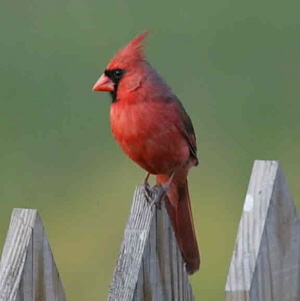
See New Birds This Autumn!
Now that fall is here you can be sure that birds all around you are getting ready for winter. Breeding season is for the most part over with the last broods of young birds fledging out of their nests. Birds may molt (lose some feathers) and grow in new ones in preparation for long journeys. They may be getting ready for or may already be migrating to their seasonal homes.
Here are 10 tips to attract more and different birds to your backyard feeders this autumn and winter.
- We suggest you take down all of your feeders and give them a good, thorough cleaning this fall. Scrub all plastic tube and bowl feeders with soap and hot water, rinse throughly and let them dry. Wooden platform feeders should be scraped to remove all debris and also scrubbed thoroughly. Make sure that there is no splintered wood on older feeders that could harm unaware birds.
- Purchase or build a winter roosting box or two. These boxes are similar to nest boxes (birdhouses) but have the door near the bottom of the box and have many perches inside where birds can huddle together to keep warm during inclement weather and long winter nights.
- Take an inventory of the types of feeders currently in your yard. To attract the largest variety of birds to your backyard, you need lots of different types of feeders. You need this season platform feeders, fruit feeders, tube feeders for the small birds, and suet feeders. There are many brands out there so make sure the feeders are well-built and sturdy to last many a season. To check out the quality feeders available at Fiddle Creek Farms click here.
- Leave some leaves on the ground or in your flower beds. Now when have you ever heard someone tell you NOT to rake all your leaves? (Yes, you may print this out and show your spouse!) Bugs and insects will scurry under those leaves, providing food for many different species of birds.
- Think of how you will provide water for birds in the winter. Birds, like all living creatures, need water year-round. Unfortunately, sometimes that water may be frozen. Depending on your climate, you may need to melt frozen bird baths using deicers at times during the colder times. Water can be in formal bird baths, in bowl on the ground, in overturned garbage can lids or in ponds. If you live in a milder climate, you may simply just to remember to keep your water sources filled for the backyard birds. And remember during the fall, to remove fallen leaves from bird baths daily!
- Start stocking up on suet. Suet can be homemade easily or bought at Songbird Garden. When the weather is bitterly cold and you do NOT want to be driving to the store, that is the time the birds desperately need the suet to generate energy to stay warm. So build up a stock of suet. Suet from the store can be stored on your shelf. Save homemade suet in the freezer.
- Clean your binoculars and put your field guides near the window. During migration, you may see birds that are unfamilar to you, and those field guides will be perfect to look them up. These travelling birds are on their way to winter homes and thought your yard would be perfect for a drink of water, a bite to eat, and a long snooze. Migrating birds will be very thirsty, hungry and tired so try to keep your feeders well stocked with a variety of food.
- Make sure your seed containers are not full of bugs! Now is the time to inspect them for infestations. Discard rotted or infested seed. Air-tight garbage cans or those with tight fitting lids make wonderful containers to put your bags of seed.
- Leave some dead flowers on their stems in your garden. Many flowers are filled with seed, a natural food source, of course! Zinnias, mums, coneflowers, sunflowers, marigolds and many other flowers are perfect to do this. Unsure whether to leave a certain variety of flower? Try picking one and then pull the flower apart in the center. If you find seeds, then the birds will also.
- And, finally, but not least, keep those hummingbird feeders up until at least Thanksgiving, filled with fresh nectar. Contrary to folklore, hummingbirds WILL begin and continue to migrate if you leave feeders up. It is their internal clock and the changing season that tell the little hummers it is time to hit the trail and get migrating. Please, please keep the feeders up. Natural nectar sources are diminishing and those little birds are VERY hungry when they come around your backyard, looking for food. The latest hummingbirds to migrate are usually those that were born near the end of the summer. If you do not provide feeders, you may cause those youngest birds to perish before they make it to their winter homes.
Source: About.com